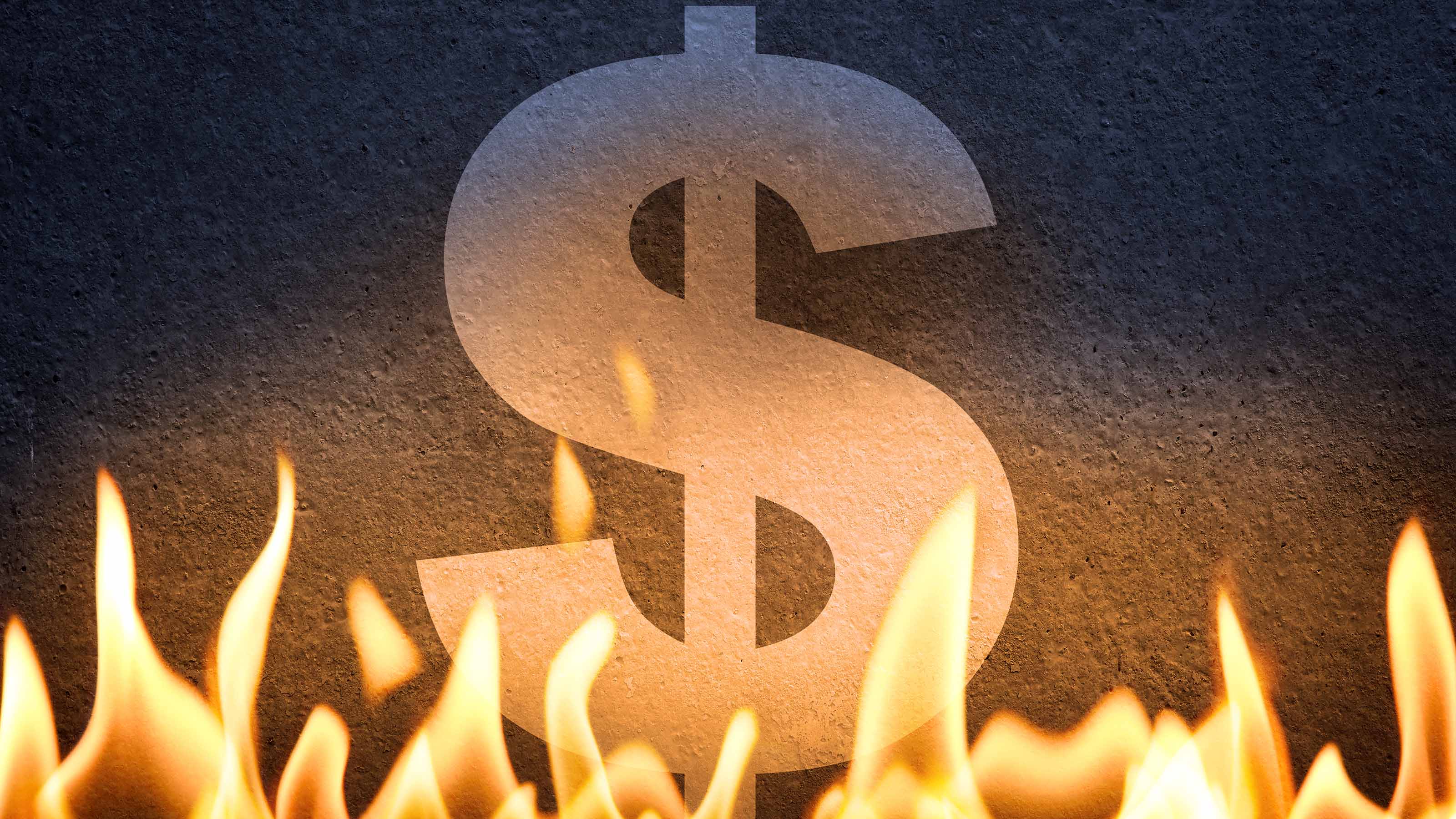September CPI Report: What the Experts Are Saying About Inflation
A stronger-than-expected reading on headline inflation supports the Fed's higher for longer stance on interest rates, experts say.


Headline inflation rose by more than economists were expecting last month, the September Consumer Price Index (CPI) showed Thursday, supporting the view that higher for longer interest rates will be necessary to bring inflation down to the Federal Reserve's long-term target.
Consumer prices rose 0.4% in September – down from a 0.6% increase in August – the Bureau of Labor Statistics reported Thursday. Economists were looking for headline inflation to increase 0.3% last month. So-called core CPI, which excludes volatile food and energy prices and is considered to be a better indicator of future inflation, rose 0.3% last month, which was in line with forecasts.
Although the latest inflation data shouldn't deter the central bank from leaving interest rates unchanged at the next Fed meeting, it does open the door to another rate hike before the end of the year, experts say.
From just $107.88 $24.99 for Kiplinger Personal Finance
Become a smarter, better informed investor. Subscribe from just $107.88 $24.99, plus get up to 4 Special Issues

Sign up for Kiplinger’s Free Newsletters
Profit and prosper with the best of expert advice on investing, taxes, retirement, personal finance and more - straight to your e-mail.
Profit and prosper with the best of expert advice - straight to your e-mail.
Interest rate traders currently assign an 89% probability to the Federal Open Market Committee leaving rates unchanged at a target range of 5.25% to 5.5% when it concludes its policy meeting on November 1, according to CME Group's FedWatch Tool. That's up from 80% a week ago. As for the Fed's December meeting, traders put the odds of a quarter-point hike at 35%, up from 26% a week ago.
With the September CPI report now a matter of record, we turned to economists, strategists and other experts for their thoughts on what the data means for markets, macroeconomics and monetary policy going forward. Please see a selection of their commentary, sometimes edited for brevity or clarity, below.
Expert takes on the CPI report

"September's CPI demonstrates that progress in lowering inflation ahead is likely to prove slower-going than it has been over the past year. However, the downward trend remains in place in our view, with the core CPI set to recede further over the coming year as shelter disinflation resumes, supply-related pressures ease and consumers grow more price sensitive. While there remains further ground to cover in returning inflation to 2% on a sustained basis, we believe recent realized progress will be enough to keep the FOMC on hold at its upcoming November meeting." – Sarah House, senior economist at Wells Fargo Economics
"While somewhat above our expectations, we do not expect today's CPI report to affect the outcome of the November FOMC meeting, for which we expect unchanged policy. Recent commentary by Fed officials has also sent a strong signal that the FOMC is likely to keep the funds rate unchanged in November." – Jan Hatzius, chief economist at Goldman Sachs
"Higher than expected headline inflation will continue to keep the Federal Reserve (Fed) in a defensive position even as core CPI continued to disinflate on a year-over-year basis. However, the acceleration in shelter costs in September is slowing down the disinflationary process and supports the Fed’s 'higher for longer' message." – Eugenio Alemán, chief economist at Raymond James
"Headline CPI report this morning came in slightly ahead of estimated, mainly due to rising energy costs with also a small increase in food prices, as well. Stripping out food and energy, Core CPI came in line with estimates at 4.1% year-over-year. Market reaction is muted given the upside surprise in headline being attributed to energy prices – very little reaction from the bond market with 10 year yields up just 5 basis points. Dollar gains are connected to relative interest plays of the major central banks and, all in all, paint a picture for investors that inflation continues to be stubborn but does not appear to be reaccelerating." – Stephen Kolano, managing director of investments at Integrated Partners
"Despite the slight acceleration in overall consumer price inflation in September, the details of the report aren't enough to prompt the Fed to hike again. The most likely course of action for the Fed is no further tightening, but for rates to remain higher-for-longer to ensure that inflation approaches its 2.0% target." – Jay Hawkins, senior economist at BMO Capital Markets
"A decision by the Fed to do anything but wait and see from here on out, whether it is a decision to hike or cut, will demand unambiguous quantitative evidence to ground the decision in. Anything short of a high-confidence level that is grounded in solid economic data will increase the risk of credibility deterioration for the Fed. Since credibility is one of the most valuable assets that the Fed has, to risk tarnishing that asset by making a directional decision on rates based on abstruse data is to risk the desired impact of the decision itself. This is one of the key reasons for why the wait and see period is likely to drag on for a while as the Fed can ill afford to act sporadically on what may turn out to be data driven head fakes." – Johan Grahn, head ETF market strategist at AllianzIM
"Core inflation grew by 0.3% month-over-month, suggesting monetary policy has been effective in decelerating labor costs, restraining labor demand, and fostering the cooldown in prices the Federal Reserve has sought to realize, especially within core services. However, headline inflation grew by 0.4% month-over-month, compounding months of acceleration over the summer due to rising energy prices, an increasingly potent risk driven by geopolitical challenges in both Europe and the Middle East. While the Federal Reserve might be inclined to maintain its terminal rate given indications of progress on core inflation, it will almost certainly view the ongoing resurgence within headline inflation as grounds for maintaining a restrictive policy posture over the coming year. Keeping rates higher for longer invariably diminishes the window of opportunity for a soft-landing, however." – Noah Yosif, economist at the National Association of Federally-Insured Credit Unions
"Headline inflation was a little hot because of energy, but core prices remained subdued. This number isn't great for the bulls but also doesn't give much reason to be bearish. The latest surge in yields has gotten rates to a place where the Fed feels much less need to act. Inflation and the Fed will be less of a news driver in coming months as all the tightening gradually takes effect." – David Russell, global head of market strategy at TradeStation
"Today's reading on September CPI confirmed the market's recent suspicion that the path to 2% inflation will be longer than expected. Against the backdrop of higher oil prices and an above-trend growth economy, we believe the Federal Reserve will need to keep financial conditions relatively tight through the better part of 2024 to achieve their inflation target. We've heard from several Fed officials over the past few days, and many of them made a point to mention that the recent spike in long-term Treasury yields has taken some of the work off their plate. As a result, we believe the FOMC is going to leave the fed funds rate unchanged for the remainder of the year, but that these higher rates may be here to stay for a while." – Ivan Gruhl, co-chief investment officer at Avantax
"While headline inflation was a bit stronger than anticipated last month, nuance matters. Core prices continued to ease, falling to a 4.1% YoY pace from 4.3% last month, which will be welcome by the Fed, though housing costs accelerated a bit. Trends there will be watched closely given tightness in the housing market despite high policy and mortgage rates. Nothing to change our expectation of one to three more Fed hikes over the next few quarters until they hold at their ultimate terminal until at least late next year. We have greater conviction in our higher for longer call than the number of additional hikes that will be needed." – Andrew Patterson, senior economist at Vanguard
Markets should react positively to today's at-expectation CPI print as this gives the Fed more reason to hold rates steady at their November 1st meeting, despite the surprising strength coming out of the labor market last week. Although moderating CPI levels year-over-year is a positive sign for consumers and investors, price growth remained especially high in key areas like shelter and transportation." – Ben Vaske, investment strategist at Orion Portfolio Solutions
"Today's data supports being close to the end of the hiking cycle as the U.S. economy remains on a disinflation path, which has been supported by recent Fed speak and the recent tightening in financial conditions. We view yields as attractive in the front-end of the U.S. Treasury curve and continue to find value in high-quality corporate and securitized bonds with short to intermediate durations." – Lindsay Rosner, head of multi-sector fixed income investing at Goldman Sachs Asset Management
Related Content
Profit and prosper with the best of Kiplinger's advice on investing, taxes, retirement, personal finance and much more. Delivered daily. Enter your email in the box and click Sign Me Up.

Dan Burrows is Kiplinger's senior investing writer, having joined the publication full time in 2016.
A long-time financial journalist, Dan is a veteran of MarketWatch, CBS MoneyWatch, SmartMoney, InvestorPlace, DailyFinance and other tier 1 national publications. He has written for The Wall Street Journal, Bloomberg and Consumer Reports and his stories have appeared in the New York Daily News, the San Jose Mercury News and Investor's Business Daily, among many other outlets. As a senior writer at AOL's DailyFinance, Dan reported market news from the floor of the New York Stock Exchange.
Once upon a time – before his days as a financial reporter and assistant financial editor at legendary fashion trade paper Women's Wear Daily – Dan worked for Spy magazine, scribbled away at Time Inc. and contributed to Maxim magazine back when lad mags were a thing. He's also written for Esquire magazine's Dubious Achievements Awards.
In his current role at Kiplinger, Dan writes about markets and macroeconomics.
Dan holds a bachelor's degree from Oberlin College and a master's degree from Columbia University.
Disclosure: Dan does not trade individual stocks or securities. He is eternally long the U.S equity market, primarily through tax-advantaged accounts.
-
 Samsung Galaxy S25 Ultra for $4.99 a Month: A Closer Look at Verizon’s Deal
Samsung Galaxy S25 Ultra for $4.99 a Month: A Closer Look at Verizon’s DealVerizon’s aggressive pricing makes Samsung’s top-tier phone tempting, but the real cost depends on your plan and how long you stay.
-
 I'm 59 with $1.7 million saved and lost my job. Should I retire?
I'm 59 with $1.7 million saved and lost my job. Should I retire?We asked professional wealth planners for advice.
-
 4 Times to Say Yes to a Roth Conversion and 4 Times to Say No
4 Times to Say Yes to a Roth Conversion and 4 Times to Say NoRoth conversions should never be done on a whim — they're a product of careful timing and long-term tax considerations. So how can you tell whether to go ahead?